
The "death rattle" is a term that evokes unease, yet it is a natural and common occurrence in the final stages of life. This distinctive gurgling or rattling sound arises when a dying person can no longer clear secretions from their throat and airways. While unsettling for loved ones, it is not typically painful for the patient.
Most people have heard of the death rattle but may not fully understand its physiological basis or how to manage it compassionately. For healthcare providers, hospice workers, and caregivers, recognizing this symptom and knowing how to alleviate it can bring immense comfort to both the patient and their family during an emotionally challenging time.
Let’s explore what the death rattle is, why it happens, and the most effective ways to provide comfort in a patient’s final hours.
Understanding the Death Rattle
In the preceding discussion, we explored the physiological changes that occur during the final stages of life, focusing on the body’s natural processes as it approaches death. Building on that foundation, this section delves into the phenomenon known as the "death rattle," a common occurrence in the dying process. By understanding what a death rattle is, recognizing its signs, and learning about its development, caregivers and loved ones can better navigate this challenging time with knowledge and compassion.
What is a Death Rattle?
The death rattle refers to a distinct, rattling or gurgling sound that occurs in the throat or chest of a person nearing the end of life. It is caused by the accumulation of saliva, mucus, or other fluids in the upper airways, which the individual is unable to clear due to weakened reflexes and reduced consciousness.
This sound is not an indication of pain or discomfort but rather a natural part of the dying process. It typically occurs in the final hours or days of life and is often more distressing for those witnessing it than for the individual experiencing it. Understanding its benign nature can help alleviate unnecessary anxiety for caregivers and loved ones.
Signs that a Death Rattle is Present
Recognizing the signs of a death rattle can help caregivers identify this stage of the dying process and provide appropriate support. Common indicators include:
- Audible Gurgling or Rattling Sounds
-
- These sounds are most noticeable during inhalation or exhalation and may vary in intensity.
- Irregular Breathing Patterns
-
- Breathing may become shallow, labored, or irregular, often accompanied by pauses known as Cheyne-Stokes respirations.
- Reduced Swallowing Reflex
-
- The individual may lose the ability to swallow, resulting in the accumulation of fluids in the throat.
- Decreased Responsiveness
-
- As the body shuts down, the person may become less conscious or unresponsive, further contributing to the inability to clear secretions.
Development of a Death Rattle
The death rattle develops as a result of physiological changes that occur during the dying process. These changes include:
- Loss of Muscle Tone
-
- The muscles responsible for swallowing and clearing the throat weaken, allowing fluids to accumulate in the upper airways.
- Reduced Cough Reflex
-
- As the body’s reflexes diminish, the ability to cough and expel secretions is significantly impaired.
- Fluid Accumulation
-
- Saliva, mucus, and other secretions naturally build up in the throat and lungs, particularly when hydration is reduced in the final stages of life.
- Changes in Breathing
-
- Irregular and shallow breathing patterns can exacerbate the movement of fluids, creating the characteristic rattling sound.
By understanding the death rattle and its development, caregivers can provide comfort and reassurance to both the individual and their loved ones during this profound and emotional time.
Causes of a Death Rattle
In the previous section, we explored the phenomenon of the death rattle, focusing on its definition and the signs that indicate its presence. To deepen our understanding, this section examines the underlying causes of a death rattle, the physiological process behind its occurrence, and the factors that may influence its manifestation. By identifying these elements, caregivers and loved ones can better understand this natural part of the dying process and provide more effective support.

Causes of a Death Rattle
Common Causes of a Death Rattle
The death rattle is primarily caused by the accumulation of fluids in the upper airways, which the individual is unable to clear due to diminished reflexes and physical weakness. The most common causes include:
- Saliva and Mucus Build-Up
-
- As the swallowing reflex weakens, saliva and mucus naturally collect in the throat and upper respiratory tract.
- Reduced Cough Reflex
-
- The body’s ability to cough and expel secretions diminishes, allowing fluids to remain in the airways.
- Dehydration
-
- In the final stages of life, reduced fluid intake can lead to thicker secretions, which are more challenging to clear.
- Pulmonary Congestion
-
- Conditions such as heart failure or lung infections may contribute to fluid accumulation in the lungs, exacerbating the death rattle.
How the Death Rattle Occurs?
The death rattle develops as a result of specific physiological changes that occur during the dying process. These include:
- Loss of Swallowing Ability
-
- As the body shuts down, the muscles responsible for swallowing weaken, leading to the retention of fluids in the throat.
- Airflow Through Fluid
-
- Breathing causes air to pass through the accumulated fluids, creating the characteristic rattling or gurgling sound.
- Changes in Breathing Patterns
-
- Irregular and shallow breathing, common in the final stages of life, can amplify the sound of the death rattle.
- Immobility
-
- A lack of movement prevents the natural drainage of secretions, which further contributes to fluid buildup.
Factors Influencing the Experience of Death Rattle
Several factors can influence the intensity and duration of the death rattle, including:
- Underlying Medical Conditions
-
- Conditions such as pneumonia, chronic obstructive pulmonary disease (COPD), or heart failure may increase the likelihood of fluid accumulation.
- Hydration Levels
-
- Excessive hydration can lead to more fluid build-up, while dehydration may result in thicker secretions.
- Positioning
-
- The individual’s body position can affect the drainage of fluids. Elevating the head or turning the person to their side may help reduce the sound.
- Medications
-
- Certain medications, such as anticholinergics, can help reduce secretions and minimize the death rattle.
By understanding the causes, mechanisms, and influencing factors of the death rattle, caregivers can approach this natural process with greater clarity and provide comfort to both the individual and their loved ones.
Symptoms of a Death Rattle
In the previous section, we examined the causes and mechanisms underlying the death rattle, illuminating how it develops and the factors that influence its occurrence. This section focuses on the symptoms associated with a death rattle, how to distinguish between different types, and when it typically begins. Understanding these symptoms can help caregivers and loved ones recognize this natural part of the dying process and respond with appropriate care and reassurance.
Typical Symptoms Associated with a Death Rattle
The death rattle is characterized by specific symptoms that are often noticeable in the final hours or days of life. These include:
- Audible Rattling or Gurgling Sounds
-
- The most prominent symptom is a rattling or gurgling noise that occurs during breathing, caused by air passing through accumulated fluids in the throat or upper airways.
- Irregular Breathing Patterns
-
- Breathing may become shallow, labored, or irregular, often accompanied by pauses or changes in rhythm, such as Cheyne-Stokes respirations.
- Lack of Swallowing Reflex
-
- The individual may lose the ability to swallow, leading to the retention of saliva and mucus in the throat.
- Decreased Responsiveness
-
- As the body approaches the end of life, the person may become less conscious or unresponsive, further contributing to the inability to clear secretions.
Distinguishing Symptoms of Different Types of Death Rattle
There are subtle variations in the symptoms of a death rattle, depending on the underlying cause and the individual’s condition. These include:
- Wet Death Rattle
-
- Characterized by a more pronounced gurgling sound, often due to excessive fluid accumulation in the throat or lungs.
- Dry Death Rattle
-
- Produces a softer, rattling noise, typically caused by thicker secretions or reduced fluid intake.
- Intermittent vs. Continuous Sounds
-
- In some cases, the rattling may occur intermittently, while in others, it may persist continuously until the end of life.
Recognizing these distinctions can help caregivers better understand the individual’s condition and provide tailored support.
When a Death Rattle Usually Starts
The onset of a death rattle typically signals that the individual is in the final stages of life. Key timing considerations include:
- Final Hours to Days
-
- The death rattle often begins within the last 24 to 48 hours of life, as the body’s systems gradually shut down.
- Progressive Symptoms
-
- The symptoms may start subtly, with occasional gurgling sounds, and become more pronounced as the individual’s ability to clear secretions diminishes.
- Associated with Other End-of-Life Signs
-
- The death rattle is often accompanied by other signs of impending death, such as cool extremities, mottled skin, and decreased responsiveness.
By understanding the symptoms, variations, and timing of the death rattle, caregivers can approach this stage with greater awareness and provide comfort to both the individual and their loved ones during this profound time.
Death Rattle Treatment Options
In the previous section, we examined the symptoms and timing of the death rattle, offering insight into its manifestation in the final stages of life. This section focuses on treatment options for managing the death rattle, emphasizing both medical interventions and comfort measures. Additionally, it highlights the importance of supporting families during this emotionally challenging time, ensuring they understand the natural process and feel reassured.
Effective Treatment Options for Managing a Death Rattle
While the death rattle is a natural part of the dying process and does not cause discomfort to the individual, specific treatments can help reduce its intensity for the benefit of caregivers and loved ones.
- Medications to Reduce Secretions
-
- Anticholinergics: Medications such as atropine drops, glycopyrrolate, or scopolamine patches are commonly used to decrease saliva and mucus production, helping to minimize the rattling sound.
- Timing of Administration: These medications are most effective when administered early, as they work to prevent further secretion buildup rather than clearing existing fluids.
- Positioning
-
- Elevating the Head: Raising the head of the bed or propping the individual up with pillows can promote drainage of secretions and reduce airway obstruction.
- Side-Lying Position: Turning the individual onto their side can help secretions pool away from the airway, lessening the sound.
- Suctioning
-
- In some cases, gentle suctioning may be used to remove excess secretions. However, this is typically avoided as it can be uncomfortable and may stimulate further secretion production.
Comfort Measures for Patients Experiencing a Death Rattle
The primary goal of care during the death rattle is to ensure the individual remains comfortable and free from distress. Key comfort measures include:
- Maintaining a Calm Environment
-
- Reducing noise and providing a peaceful setting can help create a soothing atmosphere for the patient and their loved ones.
- Hydration and Oral Care
-
- While hydration is often reduced in the final stages of life, regular oral care, such as moistening the lips and mouth, can enhance comfort.
- Avoiding Invasive Interventions
-
- Since the death rattle does not cause pain, invasive procedures like aggressive suctioning are generally unnecessary and may cause discomfort.
Supporting Families During the Death Rattle Experience
The death rattle can be distressing for families and caregivers, even though it is a natural part of the dying process. Providing emotional support and clear communication is essential.
- Educating Families
-
- Explaining the cause and benign nature of the death rattle can help alleviate fears and misconceptions about it. Families should be reassured that the sound does not indicate pain or suffering.
- Encouraging Presence
-
- Families should be encouraged to remain present with their loved ones, focusing on providing comfort through touch, words, or simply being there.
- Offering Emotional Support
-
- Caregivers and healthcare professionals should provide empathetic support, addressing any concerns or questions families may have and guiding them through this difficult time.
By combining effective treatment options, comfort measures, and family support, caregivers can ensure a compassionate and dignified experience for both the individual and their loved ones during the final stages of life.
Frequently Asked Questions
What are the signs and symptoms of a death rattle?
The signs and symptoms of death rattle include a distinctive gurgling or rattling sound during respiration, often caused by the accumulation of saliva and mucus in the back of the throat. This phenomenon typically occurs as the body progresses through the dying process, especially in terminally ill patients. Caregivers may notice noisy breathing, which can be distressing to both the patient and their loved ones.
When does the death rattle start in terminally ill patients?
The death rattle usually starts in the final hours or days of life, as the body's ability to manage secretions diminishes. This stage of the dying process is characterized by an increase in respiratory secretions due to decreased swallowing and the accumulation of saliva and mucus. It is important for caregivers to recognize this sign to provide appropriate palliative care and support for the dying person.
What causes the development of death rattle?
The development of death rattle is primarily caused by the accumulation of oral secretions and the inability of terminally ill patients to clear their airways effectively. Factors contributing to this may include decreased consciousness, muscle relaxation, and reduced cough reflex. As the body nears death, the ability to manage secretions declines, leading to the characteristic gurgling sound known as the death rattle.
How can caregivers manage the death rattle in a dying person?
Managing the death rattle involves repositioning the patient to help facilitate drainage of secretions and using pharmacological treatments such as anticholinergic medications like atropine, scopolamine, or glycopyrrolate. These medications can help reduce the production of saliva and mucus, alleviating the gurgling sound and improving comfort for the dying person. Additionally, caregivers should provide emotional support to families as they navigate this stage of the dying process.
What is the significance of the signs that death is near?
Signs that death is near include changes in breathing patterns, decreased responsiveness, and the onset of the death rattle. Recognizing these signs helps caregivers and families prepare for the imminent death of a loved one. Understanding the dying process can foster meaningful conversations and support for both the patient and their loved ones during this difficult time.
Can the death rattle be distressing for terminally ill patients?
Yes, the death rattle can be distressing for terminally ill patients and their families. The gurgling sound may lead to feelings of anxiety and discomfort, as it is often associated with the nearing of death. However, it is important to note that the death rattle itself does not typically cause pain or discomfort to the patient, and interventions can be implemented to manage the symptoms effectively.
What are the treatment options for death rattle?
Treatment options for death rattle focus on managing respiratory secretions to improve patient comfort. Pharmacological treatments, such as anticholinergic medications, can reduce the production of saliva and mucus. Additionally, non-pharmacological approaches like repositioning the patient and ensuring a calm environment can help minimize the sound and provide relief. Palliative care teams often play a crucial role in developing an individualized care plan for managing the death rattle.
What is the duration of the death rattle?
The duration of the death rattle can vary significantly among patients, typically lasting from a few hours to a couple of days before death occurs. The sound may become more pronounced as the end of life approaches, but it is essential for caregivers to understand that this is a natural part of the dying process and can be managed with appropriate care and interventions.
The Bottom Line
The death rattle is a natural part of the dying process, signaling that the body is shutting down. While it can be distressing for caregivers, understanding its causes and management can bring peace of mind. Simple measures—repositioning, medications, and compassionate care—can ease the experience for both the patient and their loved ones.
For those at the bedside, remember: the sound is more troubling for you than for the patient. Focus on comfort, presence, and dignity in these final moments. Hospice and palliative care teams are invaluable resources, ensuring that the end-of-life journey is as gentle as possible.
When faced with the death rattle, prioritize comfort, not cure—because sometimes, the kindest medicine is simply being there.


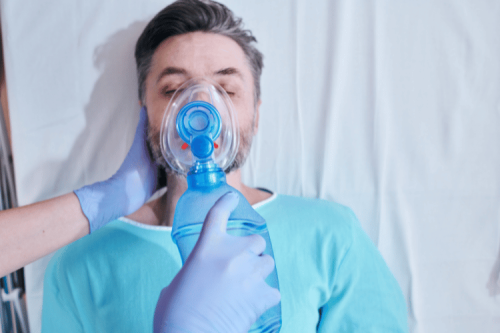
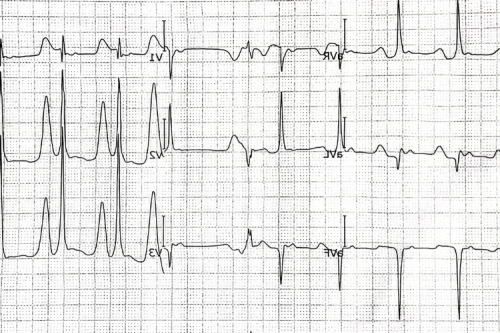
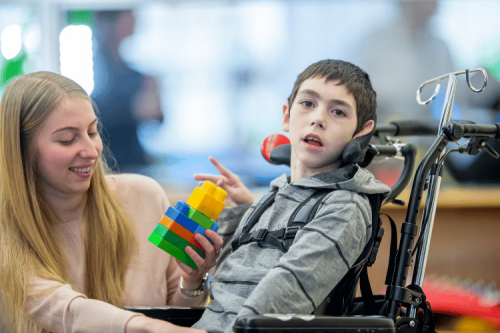
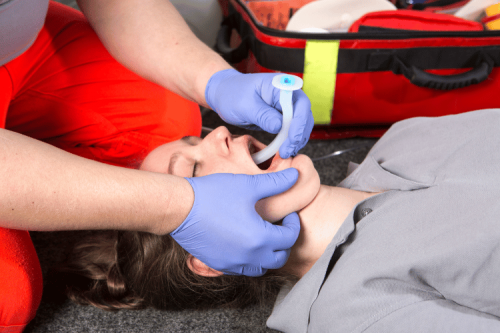
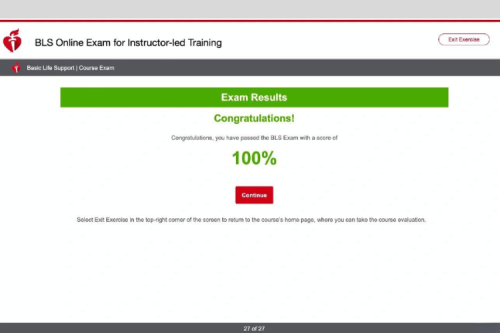
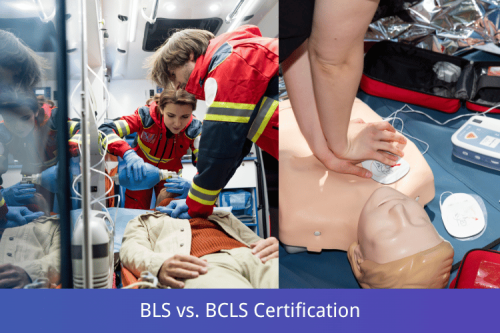
 Login with Google
Login with Google Login with Facebook
Login with Facebook